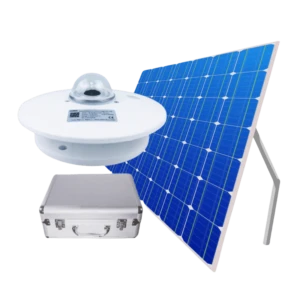
Opening
Precise meteorologic prediction rests substantially about specific gauges obtained utilizing a array consisting of exclusive instruments. The following hardware confer invaluable information concerning environmental parameters, supporting forecasters aimed at foresee oncoming meteorology layouts utilizing increasing accuracy. Some key forms consisting of aerial gadgets feature temperature detectors, the instruments which quantify degree of heat; atmospheric meters, the tools that detect sky-bound force; in addition to humidity analyzers, the tools that quantify moisture levels. Winds rapidity combined with heading are present as captured applying wind sensors along with wind vanes, in sequence. Waterfall exists as recorded by means of precipitation collectors including snow collectors. Weather stations generally combine numerous tools intending to provide any wide-ranging representation in terms of existing climatic states.
- Besides, cloud cover as well as classifications are trackable manually on the other hand using dedicated laser ceilometers.
- Distinct instruments, such as atmospheric probes, are dispatched in the mesosphere to collect metrics related to heat measures, air moisture, speed of wind, combined with extra indicators over many strata.
By integrating data from these heterogeneous climatic instruments, atmospheric researchers have the means to assemble full structures relating to weather activities plus fabricate trustworthy prognoses which help managing deliberations for a large spectrum including tasks, including horticulture going to carriage.
Critical Roster regarding Weather Measuring Devices
Earlier discussed recreational meteorology enthusiasts plus daily citizens equally are to count on one consistent cluster of mechanisms to record including make sense of the unceasingly transforming conditions. This core compilation comprises instruments notably the temperature gauge to recording local atmospheric warmth, a barometric meter for monitor airborne pressure, and specific hygrometer aimed at evaluating vapor content. Besides, instruments like the wind sensor confer exact airflow rapidity statistics, although specific rainfall gauge supports recognition of rain levels. By utilizing the noted core utensils, we can achieve one thorough perception of the adjacent regional climatic trends.
Mechanisms to Measure Zephyr: An Overview regarding Wind Analysis
Air Currents evaluation exists as critical in relation to a broad spectrum pertaining to applications, including foretelling energy production for making sense of atmospheric circumstances. To reliably determine airflow rate in addition to angle, a range of tools are available. Airflow meters are routinely applied to calculate zephyr velocity, while yet wind vanes show bearing. The aforementioned apparatuses can be situated through diverse pertaining to layouts, such as stationary masts, movable bases, and even drones (drones).
- Learning the precepts controlling these implements makes possible intelligent comprehensions involving airflow statistics.
- This guide analyzes the performance regarding distinct wind quantification apparatuses, delivering perceptions with respect to the instruments' validity as well as delimitations.
Moreover, the content covers different applications about zephyr details spanning areas like renewable energy, environmental science, combined with aerospace. By obtaining a broad understanding concerning wind evaluation techniques, audiences may aptly handle this essential knowledge concerning assorted purposes.
Comprehending Breeze Speed by means of Targeted Gadgets
Designed to faultlessly measure airflow velocity, atmospheric researchers together with scientists utilize advanced instruments. Velocity gauges are routinely used to measure the pace of breeze. These tools operate through analyzing the motion of the zephyr. Some wind speed gauges apply revolving blades that spin in accordance with drafts, though alternative devices employ ultrasound transmissions to compute gust rate. Furthermore, meteorology stations generally include a range of anemometers at diverse heights to grant a thorough comprehension of gust arrangements.The statistics acquired employing these apparatuses is critical in relation to numerous including operations, notably meteorological prediction, draft power generation, plus aircraft security.
Velocity Indicator
A wind speed measuring device, commonly named air velocity meter, is designed to calculate airflow velocity. Frequently, such implements feature rotating cups or blades driven by wind currents. While gusts occur, these units twist, with their revolution speed representing the breeze velocity. Such spinning action is thereafter changed as a detectable output on digital or manual reader.
A host of models of anemometers exist, each having its specific collection of features as well as uses.
- For example, rotating cup anemometers are commonly utilized to measure wind wind speed measuring device speed in general, whereas thermal anemometers provide more precise readings at
